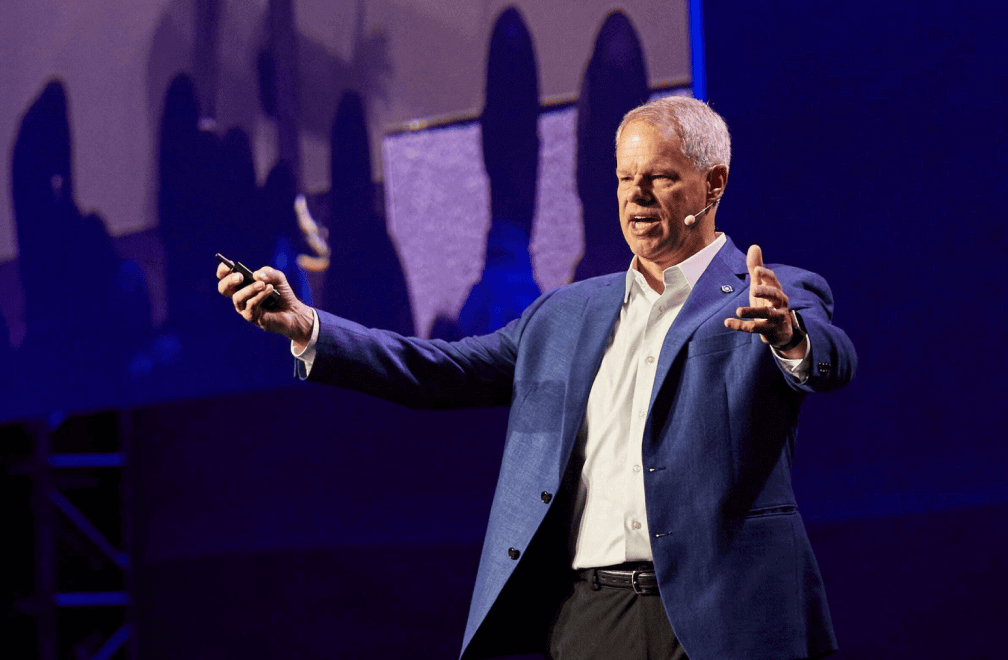
Thousands of audit, risk, sustainability, and compliance professionals tuned in virtually for Audit & Beyond 2023, AuditBoard’s fifth annual user conference, joined by hundreds who attended the event at Marriott Marquis San Diego Marina in San Diego, CA. Several key themes emerged across the thought leadership sessions, many of which grappled with the challenges organizations face in today’s dynamic business environment and the need for human-centric, intuitive solutions.
Watch the conference highlights below, read the top takeaways from some of the keynote sessions, and continue the conversation by registering for our ongoing thought leadership webinar series.
Accelerate With Confidence by Prioritizing Synergistic Value for the Front Line
In Audit & Beyond’s executive keynote, presented by Scott Arnold, Chris Doell, Evan Fitzpatrick, and Emily Oberhand, three new offerings were announced to help organizations further unlock connected risk: AuditBoard Analytics, AuditBoard AI, and Operational Risk Management (ORM).
The goal of AuditBoard Analytics is to continue to rethink how we enable work to be done. By breaking down silos and being able to access shared information, teams can improve decision-making, manage risks holistically, and improve cross-team collaboration. The goal of this modern risk platform is to manage more risks, work smarter with greater impact, and drive frontline ownership.
The goal of AuditBoard AI is to help teams focus on solving new risks more quickly. Executives are asking the question: How do we do more with less while differentiating ourselves to attract top talent? That’s where AuditBoard AI comes in, with three primary features: Generative content, intelligent recommendations, and proactive insights. Our core AI principles are simple: AI must be secure, purpose-built, human-centric, intuitive, and connected.
The goal of ORM is to drive front-line ownership. Teams have less time to respond and mitigate. Teams are also facing resource constraints, which means they are stretched thin and struggling to find ways to be more efficient. This has prompted a shift toward self-assessments, where risk and control owners are ranking their own control strength. These teams can use ORM to improve productivity, engage team members, and reduce risk exposure.
Navigate the Conflicting Promises and Perils of AI
According to McKinsey, “Artificial intelligence will contribute as much as 13 trillion dollars to global economic activity by 2030.” There are two primary divergent views regarding artificial intelligence these days: Either it’s a revolutionary force that offers unprecedented opportunity, while others foresee potential disruption and consider it an ethical, operational, and existential challenge. Thus, as John Wheeler and Rajiv Makhijani urged in their keynote on the promise and perils of AI, it is our responsibility to navigate these conflicting narratives with both optimism and caution.
Permacrisis Is the Word of the Year
Permacrisis — defined as an extended period of instability and insecurity — has taken hold. As a chaotic, volatile environment develops, departments are struggling. Audit struggles to maintain dynamic, risk-centric audit plans, risk is under pressure to identify and communicate emerging issues, while compliance struggles to identify and communicate the most critical compliance priorities.
As Richard Chambers stated in his keynote on risk and audit transformation in the era of permacrisis, the reality is that collaboration between audit and risk is lacking. To scale with the risk exposure gap, we must embrace transformation.
It’s critical to take a few clear steps: Transform our mindsets, expand the use of automation and analytics, improve capabilities to continuously monitor risks, strive for impactful stakeholder communications, and treat technology as the great capacity multiplier.
Confronting the Next Phase of Cyber Risk as a Connected Organization
The key to confronting the next phase of cyber risk is prioritizing alignment and cultivating relationships. Leverage relationships throughout the whole business, not just when there is an issue.
As discussed in this keynote featuring Richard Marcus, Dominique Vincenti, Lucia Wind, and Bob West, it’s critical to develop an attitude that focuses on “we” — never us vs. them. Have an understanding and an appreciation of the people in the roles you interact with. As audit, risk, and compliance professionals, we compete with products and in the industry. However, don’t compete on security. We’re all battling the same adversaries.
Avoid ESG Paralysis by Analysis
As big ESG changes loom on the horizon, audit teams feel overwhelmed by the idea that they must be responsible for everything. But in today’s volatile world, should you aspire only to ESG compliance?
It’s critical to avoid paralysis by analysis by focusing on an agile operating ESG model. Remember — there’s no one starting point, pace, end destination, or way to do it.
For all the audit, risk, sustainability, and compliance professionals who joined us at Audit & Beyond in person or virtually, we hope that you left energized, inspired, and equipped with actionable insights you can bring back to add value to your organizations. Thank you to all of our speakers, sponsors, and attendees — we invite you to continue the learning and conversation with AuditBoard’s ongoing thought leadership webinar series.


